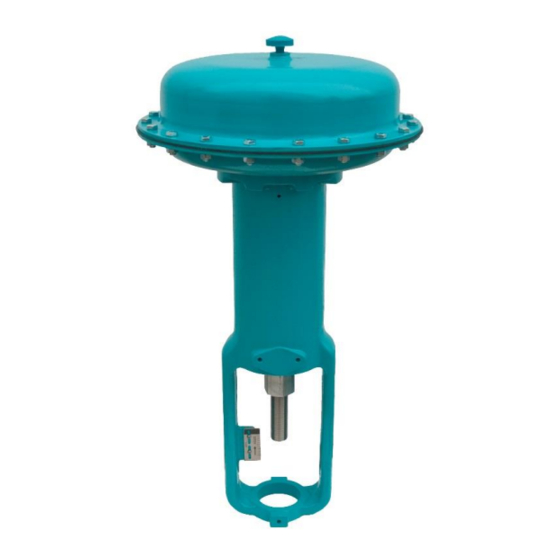CVS Controls 667 Gebrauchsanweisung
Blättern Sie online oder laden Sie pdf Gebrauchsanweisung für Controller CVS Controls 667 herunter. CVS Controls 667 8 Seiten. Diaphragm actuator

Instruction Manual
CVS Type 667
Diaphragm
Actuator
Sizes 30-70
All CVS Controls actuators are to be installed and
maintained in accordance with instructions supplied
by CVS Controls.
This manual includes information on installing,
maintaining and adjusting the CVS Type 667
Actuator, sizes 30 to 70. Part numbers for the entire
assembly is also included. For information on other
equipment used with these actuators, consult the
appropriate manuals.
Introduction
The CVS 667 is a reverse-acting, spring-opposed
diaphragm actuators providing 3-inches (76 mm) of
maximum travel. Although typical pressure ranges
are 3 to 15 psi or 6 to 30 psi, additional pressure
ranges are available upon request. The CVS Type
667 Actuator is used for automatic operation of
control valves, effective in applications where
throttling or on/off service is required.
The actuator positions the valve plug in the valve in
direct response to the varying loading pressure on
the actuator diaphragm. When the signal pressure
increases to the lower diaphragm casing, the
actuator stem is forced upward, compressing the
spring. When the signal pressure is reduced, the
spring moves the actuator stem in the downward
direction. If the signal pressure should fail, the
spring will force the stem downward, providing "fail-
closed action" for "push down to close" valves.
Head Office
3900 – 101 Street
Edmonton, Alberta, Canada T6E 0A5
Office: (780) 437-3055
Fax: (780) 436-5461
Website: www.cvs-controls.com
Figure 1: CVS Type 667 Actuator
Specifications
Refer to Table 1 for specifications for the CVS Type
667 Actuator, and to the nameplate on your actuator
for settings specific to your equipment.
It is important not to exceed the Maximum
Diaphragm Pressure as listed in Table 1 when the
actuator is set at less than full travel. If this pressure
is exceeded before the travel stop comes in contact
with the upper diaphragm plate, the maximum
allowable valve stem load may be exceeded.
The Maximum Excess Diaphragm Pressure as listed
in Table 1 is the pressure that can be added when
the actuator is set at full travel. The sum of the
pressure which is required to fully stroke the valve
and the excess pressure added when the actuator is
against the stop must not exceed the "Maximum
Diaphragm Casing Pressure" as outlined in Table 1.
E-Mail: [email protected]
Calgary Sales Office
3516 – 114 Avenue SE
Calgary, Alberta, Canada T2Z 3V6
Office: (403) 250-1416
Fax: (403) 291-9487
1
